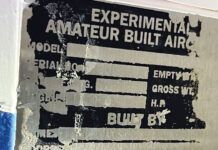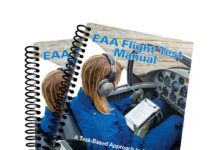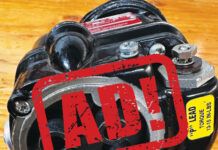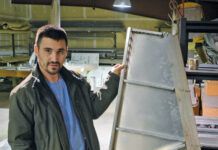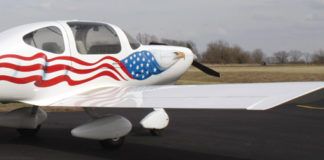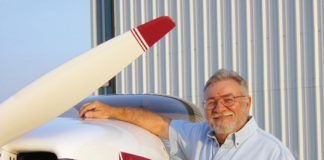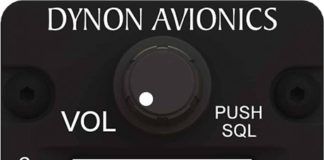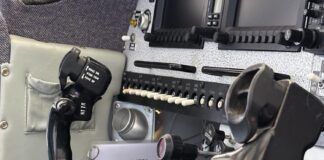The FAA finally got around to providing guidance on airworthiness directive applicability to homebuilt aircraft, updating a document last touched in 1995. An updated advisory circular (39-7D) was published in March that supposedly puts to rest a smoldering question among builders: Do airworthiness directives published by the FAA have any bearing on homebuilt aircraft?
Previously at issue was language in the ADs themselves that referred to parts going into type-certificated aircraft. Such exclusionary verbiage led many, actually most, to assume that ADs simply didn’t apply to Experimental-registered aircraft. Because there is no Type Certificate (TC) involved with a homebuilt, there is no way an AD can apply. This issue was further muddied by the way ADs for parts on engines, as an example, were keyed to the make/model/serial number of TC’d aircraft.
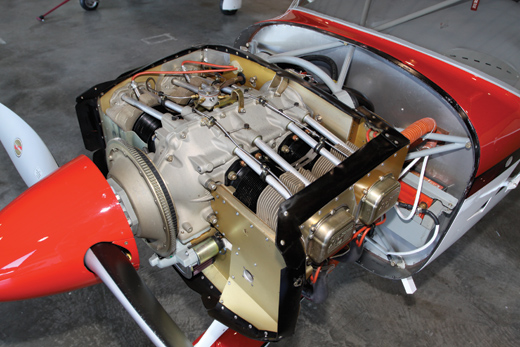
Such ambiguity has led to builders facing difficult questions during the initial inspection for the airworthiness certificate. Those taking a strict interpretation of the rules claimed that even an AD-affected part was not an issue because homebuilts have no TCs, and therefore the AD could not apply. Accordingly, local guidance from Flight Standards District Offices (FSDOs), Manufacturing Inspection District Offices (MIDOs) and local Designated Airworthiness Representatives (DARs) grew like weeds. Some localities agreed with the strict (and non-restrictive) interpretation, while others made up piecemeal exceptions. For example, some examiners wanted to know if specific components in an engine were part of an overall AD regardless of the lack of a TC for the aircraft.
It’s a sticky situation both ways. First, some builders were convinced that ADs didn’t apply at all, leading them to ignore such things as the long-known AD on Lycoming oil pumps or the troubles with aftermarket cylinder assemblies. Second, when builders felt that an AD did apply to homebuilts, they sometimes faced an uphill battle getting the part manufacturer responsible for the problem to offer redress. I’ve heard of those who experienced a catch-22 regarding this issue: The manufacturer of the part wants the part out of circulation regardless of what kind of airplane it’s in, but won’t accommodate the homebuilt crowd with the same kind of warranty coverage because homebuilts aren’t subject to ADs. In my view, that’s gaming the system.
So, What’s Changed?
The FAA didn’t make sweeping alterations to the AC. Of note is this paragraph: “Unless stated otherwise (see subparagraph 9b of this AC), ADs only apply to type-certificated (TC) aircraft, including ADs issued for an engine, propeller, and appliance,” says the new AC. Paragraph 9b says, in part, “Non-TC’d aircraft (e.g., amateur-built aircraft, experimental exhibition) are aircraft for which the FAA has not issued a TC under part 21. The AD applicability statement will identify if the AD applies to non-TC’d aircraft or engines, propellers, and appliances installed thereon.”
I asked our resident DAR, Mel Asberry, about the new AC. “Remember that ACs aren’t rules,” he said. “They’re guidance, but not rules. They carry no power. So in that way, I don’t see this new AC making a lot of difference. The problem is that we had a lot of local FSDOs coming up with interpretations of the actual rule. I’m sorry, but just because a FSDO’s boss says something is one way, that doesn’t make it so. The rule makes it so.” Even with slightly clarified guidance, there will still be interpretations.
The Real World
In a perfect world, we would never run engines or accessories that have untended ADs applied to them. After all, an AD is issued when there are significant problems found in the field—cracking cylinders, defective manufacturing, poor assembly and other issues that could lead to significant damage or risk of power loss. If an AD were to arrive on a part I owned, I would comply with it. “That [oil pump] doesn’t know if it’s in a Cherokee or an RV,” Asberry said, and he’s right.
But it’s a bit murkier when you drill down to the ways you can comply with the AD. Some have very specific remedies—replace such-and-such part before XX hours—while others can have AMOCs applied; that would be alternate means of compliance. But what if, as the builder and manufacturer of your airplane, you come up with an “alternate means” that’s not covered or approved by the FAA? Does your solution carry the same weight? For that matter, can the parts manufacturer foist a different remedy on you because that part is going into a homebuilt? Traditionally the answer has been yes. You, the manufacturer, can determine the proper remedies, and once those have been applied, you make the determination that the airplane is airworthy. The new AC changes none of that.
What the new AC is likely to do is open the possibility that ADs will be specifically targeted at homebuilts. Now the language is there to call out, say, all Lycoming IO-360 engines in a certain serial-number range or certain parts regardless of where they are installed. As I read the AC, such ADs would apply to your homebuilt.
As a matter of course, I would look carefully at every AD that applied to parts on my airplane. I would also make a point to stay in close contact with manufacturers of non-certified parts on the airplane. Just because an Experimental-only parts maker doesn’t have to issue ADs, this doesn’t mean they aren’t warranted—watch notices such as service bulletins like a hawk.
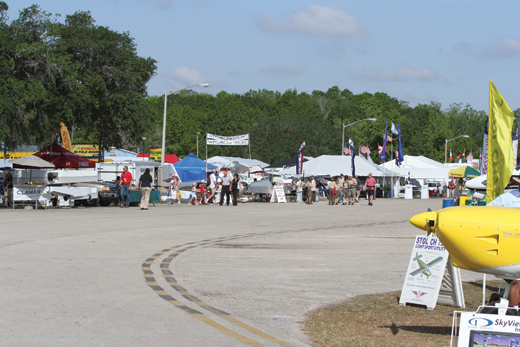
Where’s the Middleman?
Walking Sun ‘n Fun this year, I had a rare salient thought. The vendors are saying that while overall foot traffic is down, the sales of most things—big and small ticket alike—were doing just fine. (In fact, a couple of vendors told me that they were having an excellent show and that overall, they were looking to have a good year.) They also said the number of “tire kickers” was way down. Finally, it was clear that the bulk of the visitors on the last two days of the show, Saturday and Sunday, were casual at best—there for the airshow attractions and not to choose a new EFIS.
So, where’s the guy in the middle? Not the wealthy enthusiast who can just write the check, but the potential builder who would love to be part of the sport, the one who has to work hard to make the investment. Where is he?
I think he’s simply staying home. My theory is this: Today’s middle class is under increasing pressure from every corner. Work is harder to get and tougher than ever to keep. Management and other sectors where a guy could hope to make a decent living—decent enough to live modestly but even remotely consider building and owning an airplane—have been hard hit. Outsourcing has made so many of these jobs just go away, and those that remain don’t pay what they used to, as companies squeeze expenses from every corner of the empire. On top of that are rapidly increasing costs—especially the one we see the most prominently, fuel. In 2008, when fuel prices skyrocketed and I was out at the airport ever day, the decrease in flying traffic was plain to see and hear. What used to be a constant buzz of light traffic soon became the occasional Pilatus landing or the poor, overworked Piper Seminole doing multi-engine training. For a time, the average guy continued to come to the airport over the weekend, if only to shine the airplane and contemplate a short local flight. Then I stopped seeing him. He wasn’t in Lakeland, either.
What will bring him back is anyone’s guess. I think his quality of life has to improve—the job needs to seem more secure, for example—but I also think he has to see value in building and flying. Fix one, and the other will follow. It’s good to know that the survivors in aviation have trimmed and hunkered down, seemingly ready to wait for this customer’s return.





